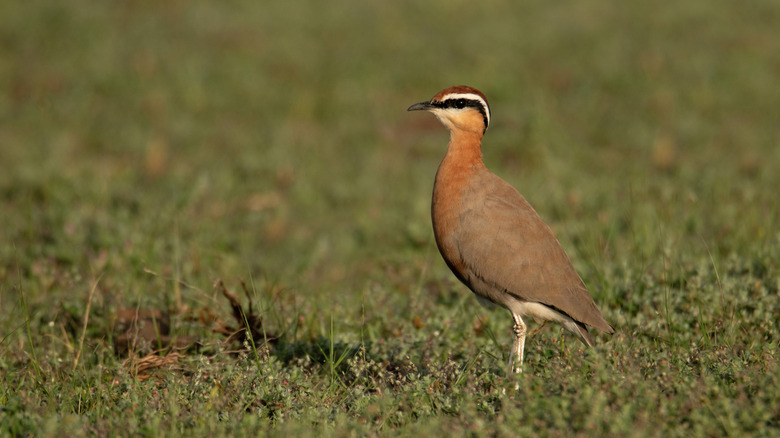This Critically Endangered Species Was Finally Found After Disappearing For 20 Years
Unseen for a whopping two decades (and still technically unseen), a Jerdon's courser (Rhinoptilus bitorquatus) was identified on the east coast of southern India in August, 2025, by a small team of Indian birders. They researched a potential habitat that this type of bird frequents for weeks before spending time in the field, listening, more than watching. That led to the researchers successfully documenting a two note call during the very first night of their watch. This is a big deal because the bird hasn't been spotted in the wild for a long time and is classified as Critically Endangered by the International Union for Conservation of Nature Red List of Threatened Species.
It's remarkable just how little is known or documented about Jerdon's courser. There's no listing for its general area of occupancy, indications about how many places where the bird lives, nor is there information on its subpopulations or how numerous the species is. A big reason for the unknown is that it was assumed extinct for most of the 20th century until it was rediscovered in 1986 around Lankamalai, India. Detections of the species happened intermittently throughout the years, mostly through identified calls. The last time it was verifiably spotted was in 2004 when a Jerdon's courser was captured by a camera trap. It's also not classified as migratory, which means the bird likely stays where it's endemic.
Scientists know very little about the Jerdon's courser
This type of bird is considered "poorly known," which means scientists don't have much data on it, despite years of research. Most of our knowledge comes from indirect observation methods, such as using automated camera traps and tracking strips. What is known, is that the Jerdon's courser is a small- to medium-sized ground bird that runs fast across rough soil with its long legs. Thanks to its large eyes, it's able to hunt insects, which it does in short bursts of time. When it's not hunting it primarily stands still, which, coupled with its nocturnal lifestyle and low numbers, means it's nearly impossible to spot. Compounding these problems, its known habitat — the scrub-jungle — is increasingly scarce and fragmented due to the growth of human settlements in the surrounding areas.
Scientists believe the Jerdon's courser is still out there, but the current population is likely no more than 50 mature individuals. In cases like this, finding the birds, and documenting their calls and behaviors can help find additional populations, if they exist. That's precisely why the bird spotters were interested in capturing its calls, archiving the audio, and using it for future verification. Additionally, by discovering the patches or areas where they live, ecologists can leverage the information to better protect them, especially when population decline is linked to their shrinking habitats and environments.
Similar to how the beautiful white-tailed eagle was brought back after hundreds of years. Several rare bird sightings have happened in recent history, as well. The double-striped thick-knee was recently spotted in Texas after not being seen for over 60 years. Scientists also rediscovered the night parrot, a rare and elusive bird through to be extinct for 100 years.
